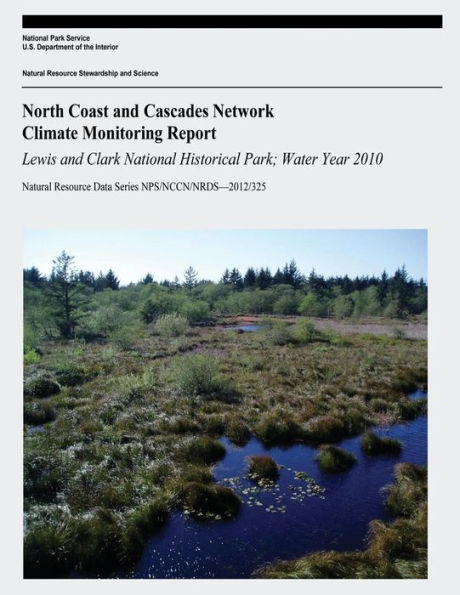North Coast and Cascades Network Climate Monitoring Report: Lewis and Clark National Historical Park; Water Year 2010
Climate and weather events define the ecological characteristics found in National Parks and are key to understanding and interpreting changes in natural resources. Everyday park operations including fire management, natural resource activities, maintenance of park infrastructure, and visitor use are influenced by weather. Monitoring weather and maintaining climate records provides essential information to support park operations and monitor park resources. This report summarizes climate data collected at weather stations within and adjacent to Lewis and Clark National Historical Park from the 2010 water year. It is part of a set of climate summary reports from seven national and historic parks in the North Coast and Cascades Network. Published in the National Park Service's Natural Resource Data Series, annual climate summary reports are intended to provide basic data sets and data summaries in a timely manner, with minimal interpretation and analyses. We envision National Park staff, especially, planners, scientists, interpreters, partners; and interested public as the primary audience for these reports. Temperature and precipitation data are presented from four weather stations located along the Pacific Coast from Northern Oregon to Southern Washington. Data were recorded using automated and manual instruments operated by the National Weather Service and Federal Aviation Administration. For two stations with long term records; the Astoria Regional Airport Automated Surface Observing Systems (ASOS)/Cooperative Observer Station (COOP) Station and Long Beach COOP Station, monthly average temperatures and monthly total precipitation are reported and compared to the 30-year normal. For all stations, monthly air temperature and precipitation data are displayed. Daily precipitation and average daily temperature are presented for three stations. Weather data collected in water year 2010 indicated that average annual temperatures were near normal with slightly above normal annual precipitation. Overall, conditions during the winter months were warmer than normal, but shifted to cooler and wetter conditions during the spring months.
1134403924
North Coast and Cascades Network Climate Monitoring Report: Lewis and Clark National Historical Park; Water Year 2010
Climate and weather events define the ecological characteristics found in National Parks and are key to understanding and interpreting changes in natural resources. Everyday park operations including fire management, natural resource activities, maintenance of park infrastructure, and visitor use are influenced by weather. Monitoring weather and maintaining climate records provides essential information to support park operations and monitor park resources. This report summarizes climate data collected at weather stations within and adjacent to Lewis and Clark National Historical Park from the 2010 water year. It is part of a set of climate summary reports from seven national and historic parks in the North Coast and Cascades Network. Published in the National Park Service's Natural Resource Data Series, annual climate summary reports are intended to provide basic data sets and data summaries in a timely manner, with minimal interpretation and analyses. We envision National Park staff, especially, planners, scientists, interpreters, partners; and interested public as the primary audience for these reports. Temperature and precipitation data are presented from four weather stations located along the Pacific Coast from Northern Oregon to Southern Washington. Data were recorded using automated and manual instruments operated by the National Weather Service and Federal Aviation Administration. For two stations with long term records; the Astoria Regional Airport Automated Surface Observing Systems (ASOS)/Cooperative Observer Station (COOP) Station and Long Beach COOP Station, monthly average temperatures and monthly total precipitation are reported and compared to the 30-year normal. For all stations, monthly air temperature and precipitation data are displayed. Daily precipitation and average daily temperature are presented for three stations. Weather data collected in water year 2010 indicated that average annual temperatures were near normal with slightly above normal annual precipitation. Overall, conditions during the winter months were warmer than normal, but shifted to cooler and wetter conditions during the spring months.
13.99
In Stock
5
1

North Coast and Cascades Network Climate Monitoring Report: Lewis and Clark National Historical Park; Water Year 2010
32
North Coast and Cascades Network Climate Monitoring Report: Lewis and Clark National Historical Park; Water Year 2010
32Paperback
$13.99
13.99
In Stock

Product Details
| ISBN-13: | 9781548896409 |
|---|---|
| Publisher: | CreateSpace Publishing |
| Publication date: | 07/14/2017 |
| Pages: | 32 |
| Product dimensions: | 8.50(w) x 11.02(h) x 0.07(d) |
From the B&N Reads Blog
